
First and Only Weekly Online Fanzine Devoted to the Life & Works of Edgar Rice Burroughs
Since 1996 ~ Over 15,000 Web Pages in Archive
presents
Volume 3116
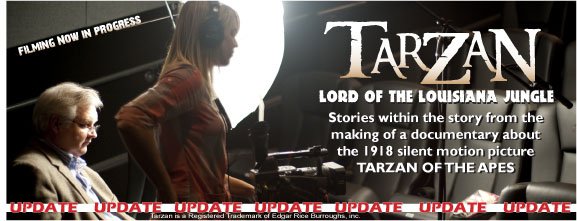


African American Connection Since I first began this journey I have desired to interview some of the African Americans who were either in the original Tarzan film shot in Morgan City or had relatives or friends who were in the film. There were three reasons that South Louisiana was chosen for this film. One was that the producers were looking for a jungle region in the U. S. that could double for the African jungle described by Burroughs in the book. Second, they were looking for a large number of African Americans who could be extras and finally, a train depot so they could bring their crew and equipment by rail.
and the Avoca Island FerryThe thought of a large number of Black people being in a movie who had probably never seen a movie was fascinating to me. How could the filmmakers explain how to act in front of a camera for folks who had never seen a camera? This is 1917 when many of these residents had not been Free people very long. They had weathered either the Civil War or the equally trying Reconstruction era. Motion pictures were barely 20 years old. The people I interviewed for the documentary described to me what it was like to see their first film on a giant screen. Most of these people were 10 to 12 years old. All had sad memories of having to use a separate door that led to the balcony. They were not allowed to buy popcorn or cokes because that was in the white area of the lobby. However, they were all blown away by the thrill of first seeing people on a giant screen.
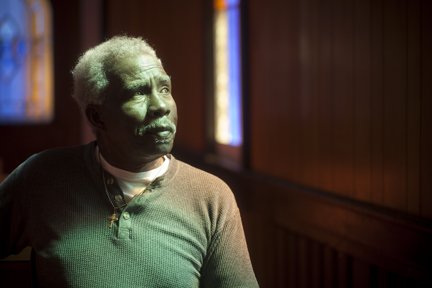
Maurice Ruffin |
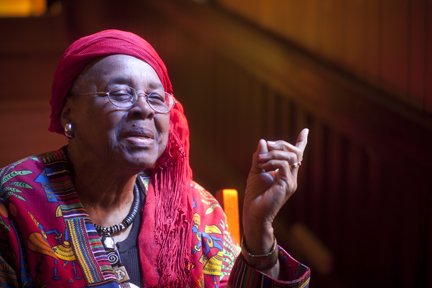
Delores Henderson |
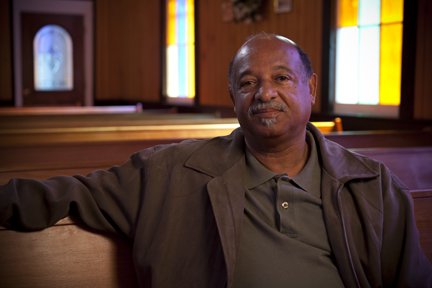
Wendell Bogan |
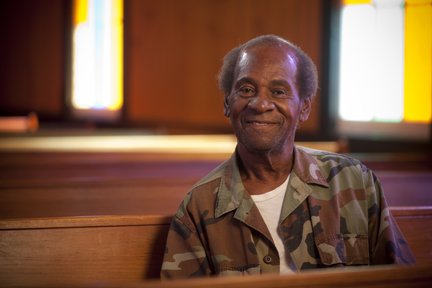
Lloyd Wilson |
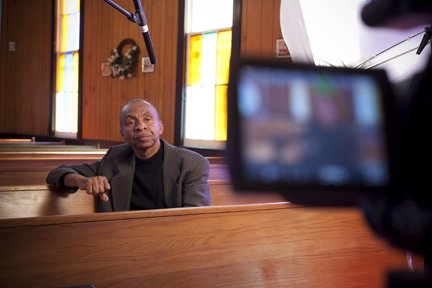
My first few trips to South Louisiana garnered me a good number of white people but no black people. Before I go into an area I contact the press, radio and television to try and generate interest and draw out people to interview. In my press releases I specifically asked for African Americans. None came forward. I talked with people about this problem and most seemed to feel that perhaps they didn’t want to discuss such a sensitive time in their history. I decided that I needed to find a way to gain their trust and that only a black person could help me gain entrance into that community. Danika Foley works in the news department of KWBJ television for the Morgan City area. She is African American. I emailed her for help and she gave me two names. One was a man who was head of the NAACP and the other was Almetra Franklin. Mrs. Franklin works for the Parish of St. Mary. Louisiana has Parishes instead of counties. She found several people from her church who knew about the film.Almetra worked with us to get the interviews set up at the Zion Baptist Church in Morgan City. Everyone was beyond kind and helpful. The church opened its doors to us and even prepared lunch for everybody. The food and desserts were heavenly.
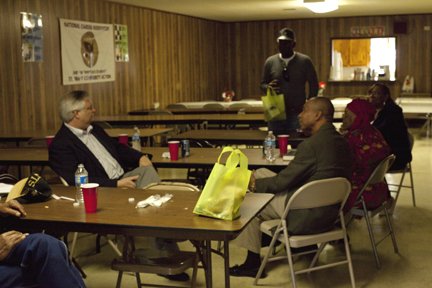
Mt. Zion LuncheonWe interviewed four men and a woman. They shared some wonderful things about the making of the Tarzan film that you will have to wait to see in the documentary to see. I did question them about what it was like being African American in the 1920s. Their lives were hard and they were poor. They had five to eleven brothers and sisters and their parents share-cropped for very little money. The plantation or “company” store advanced them food and supplies which the family would pay up each month. No matter how hard they worked, they always were in debt to the store. It was a form of economic slavery. Their homes were less than adequate. Some said that when you lay down on a bed, you could see the stars through the cracks in the roof and the dirt on the ground from the cracks in the floor. They were both proud and amazed to report that they were seldom ever sick growing up.
The most revealing thing about their tales of hardship was that they looked back on that time fondly. Their families were close and their neighbors were like family. They were all poor together. They miss the “love” they had back then. Each said that their children and grandchildren did not believe them as they tried to share the stories of their lives with them.
Every one of the African Americans we spoke with said that they felt that removing segregation in schools was a terrible thing. But, they did feel that while some racism continues but not like it was in their youth. They expressed concern about some of the negative things going on in Black America today. After a while of talking to them, I felt comfortable enough to ask them a question that has bothered me for a long time. I wanted to know if they preferred to be called African American or Black. They said “Black.” Naturally, there were other words that they didn’t like to be called or ways they didn’t desire to be treated. Each of these people who came from poverty had risen to live purposeful lives.
I have wondered if doing this documentary will impact or change even one person. I can honestly say that it already has – it’s changed me. I am from the south. I grew up in separate schools, separate water fountains and as a child felt fear during the Civil Rights movement of the early 1960s. When I became a man, I decided that I would not refer to anyone in a disrespectful way, even in a joking manner. Everybody is prejudiced towards something or someone. I was once told not to mention that I was part Cherokee Indian during a visit to South Dakota. In Louisiana, to be part Indian is considered noble. However, it wasn’t until Tarzan of the Apes, that I began to really start to look at the depiction of Black people in film from the other side of the table. Compassion is being able to put yourself in a position to see life from the viewpoint of another person. The three steps to loving someone are to see the person, have compassion on that person and then do something for that person. Tarzan of the Apes has been a conduit for me to work harder to be a change agent for good.
This past summer before going to see George McWhorter in Louisville and the Dum-Dum in Dayton, Allison and I drove up to Aurora, IL. We interviewed Gerald Butters, Jr. He wrote a splendid book entitled Black Manhood on the Silent Screen. I will deal with our visit with Gerald in another story-behind-the-scenes writing. I just wanted to recommend this book to you should you be interested in the negative and positive manner in which the Black culture has been treated through cinema.
If you take a moment to go to Morgan City, Louisiana via Google Earth you will see that to the south of the city sits Avoca Island. Now days there is a bridge somewhere that connects the island to another portion of land, but if you want to go from Morgan City to the island you have to go by the Avoca Island Ferry boat. 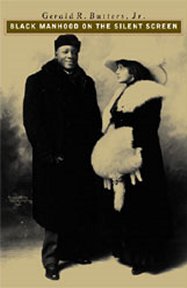
Black Manhood on the Silver Screen
The Avoca Island FerryThe ferry transported the 300 to 800 African American extras over to Morgan City to go by truck to the Lake End Park in 1917 to shoot the village scenes in the film Tarzan of the Apes. I dug around until someone put me in contact with a man in the Public Works Department of St. Mary Parish. He gave me the "okay" to film the ferry back in June 2009. However, the Atchafalaya River was swollen and dangerously swift. As we were heading over the bridge into Morgan City that day, I received a call from my contact saying that the ferry had been hit by a tug boat the night before and was out of commission. The man who owned the camera boat was relieved because he was concerned about the putting his boat back into the river. I had already taken an unscheduled dip in the Bayou Teche that morning so I didn't press the issue.
In January of 2010, I had some interviews to get in the Morgan City area and I contacted the public works director. He said we needed to hurry up to shoot the ferry because the Coast Guard had just determined the boat needed to be taken into dry dock for extensive repair. This prompted our setting up the interviews I wrote about earlier in this report.
In March, we finished our interviews, went by the town archives and then headed to the ferry. I expected to see the type of ferry that I had ridden before in my life. This one turned out to be more like a floating pier with a small engine that pulled on steel cables to get from one bank to the other. The pilot was named Robert. He was happy to allow us to film his vessel but I sensed the entire time that he couldn’t understand our interest in his craft. He was helpful and waved to us as we drove away. You will see Avoca Island and this ferry in the film. Here is a photo that will have to satisfy you until then.
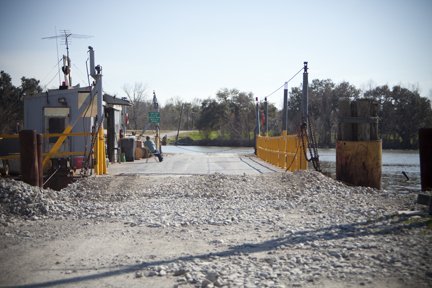
Robert and the Avoca Island Ferry
BACK TO INTRO PAGE

![]()

![]()
BILL
HILLMAN
Visit
our thousands of other sites at:
BILL
& SUE-ON HILLMAN ECLECTIC STUDIO
ERB
Text, ERB Images and Tarzan® are ©Edgar Rice Burroughs, Inc.-
All Rights Reserved.
All
Original Work ©1996-2010 by Bill Hillman and/or Contributing Authors/Owners
No
part of this web site may be reproduced without permission from the respective
owners.